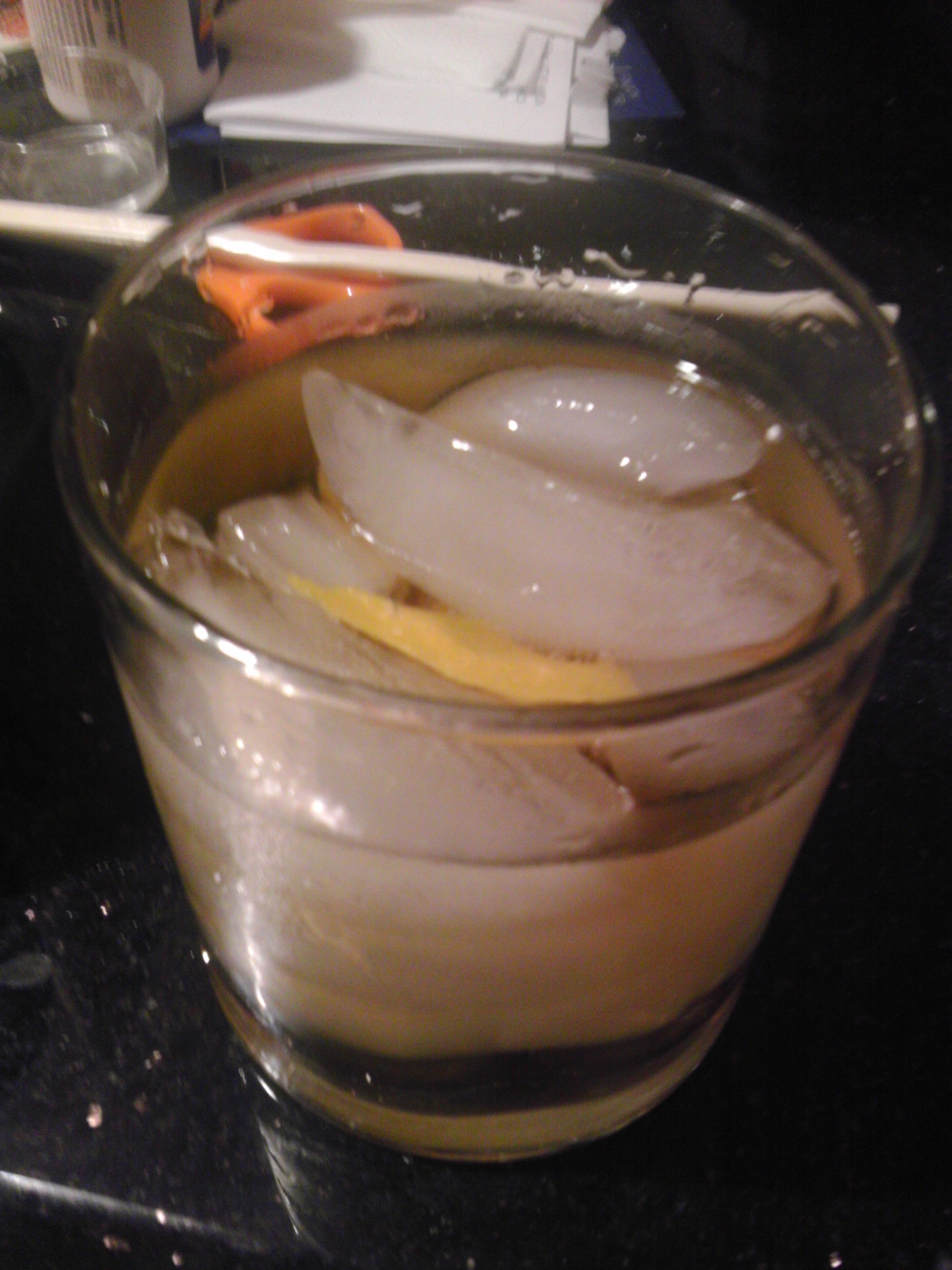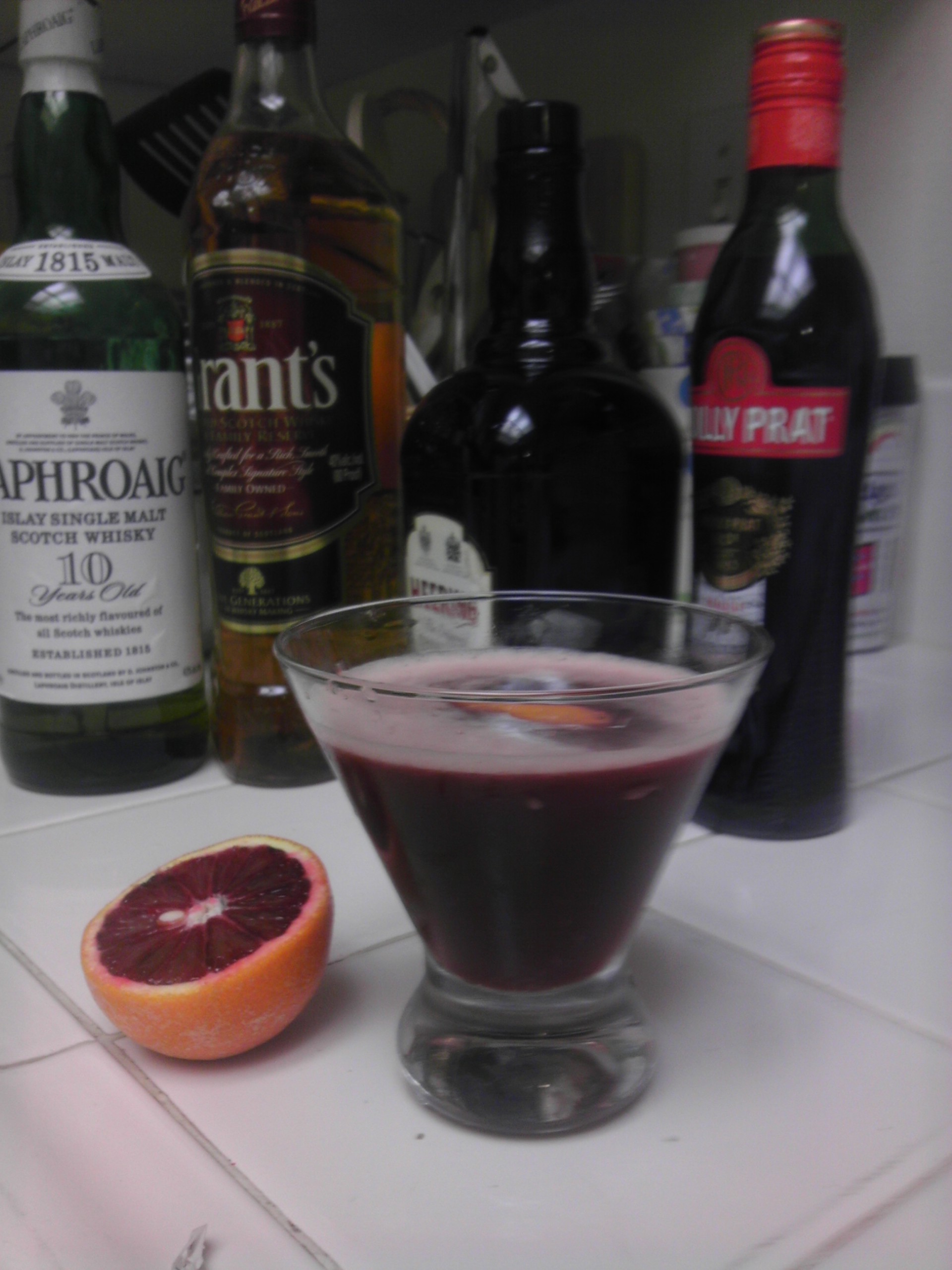Drink of the Week: The Rusty Nail
 Now that we’re finally just starting to settle down just a bit here at Drink of the Week Plaza, I thought it best to dip my big toe back into the waters of a weekly blog with a drink that is about as simple and easy to make as anything worthy of calling a cocktail.
Now that we’re finally just starting to settle down just a bit here at Drink of the Week Plaza, I thought it best to dip my big toe back into the waters of a weekly blog with a drink that is about as simple and easy to make as anything worthy of calling a cocktail.
Now, if you’re looking for an Oscar tie-in, there really isn’t one, except that the characters in “American Hustle” would undoubtedly be familiar with today’s drink, which wasn’t invented in the 1970s but pretty much embodies the spirit of a time when booze was pretty much strictly a means to a sweet end. It’s also not a horrible way to wrap up the trilogy of Scotch-based cocktails we’ve been working on for these last couple posts.
Today, I present you a drink that’s absolutely guaranteed to be more pleasurable than a bout of tetanus.
The Rusty Nail
2 1/2 ounces Scotch whiskey
1/2 ounce Drambuie
1 lemon twist (optional but desirable garnish)
Get a rocks glass and fill it with ice. Add Drambuie — a reasonably tasty and unreasonably expensive Scotch-based liqueur — and then add some Scotch. Maybe throw on a lemon twist. Toast whomever the hell you please because this drink is perfect for people too busy to toast.
*****
In terms of ingredients and how to mix them, there are three big questions with the Rusty Nail. One is the brand of Scotch. David Wondrich tells us, not surprisingly, blended Scotches like your dad and grandpa drank are best for a Rusty Nail. We’re talking Johnny Walker, Cutty Sark, Dewar’s and the like. I actually tried a very good single malt and my mouth instantly knew that something was amiss. Too much smoke, too much fire.
The next question is your proportion of Drambuie to Scotch. While I have a sweet tooth, I find using equal parts Scotch and Drambuie — as many older recipes have it — way, way, way too sweet. Even Wondrich’s 1/2 to 2 seemed a bit sweeter to me than I would prefer. Moreover, the boozy guru’s demand that we mix, instead of layering in, the ingredients wasn’t really working for me either. That, by the way, indicates the third big question of the Rusy Nail.
At that point, I found inspiration in my new neighborhood, or technically the next neighborhood over, as I visited a very accomplished 1970s boozery and eatery with surprisingly great food. I speak of Studio City’s the Oyster House — home of, among other tasty 1970s-esque delicacies, very delish oyster shooters, six for $6.00. Bartender Greg (at least I think it was Greg) made me a drink that was, I’m guessing, 1/2 to 2 1/2, in which he poured the Drambuie first and some Dewar’s White Label second. The result was pretty lovely, with the Drambuie at the bottom of the drink acting like a dessert t following the bracing, icy Scotch. I went home and tried the same thing but with Grant’s, and the results were just about as good.
So what have we learned today? Well, I’m learning my new neighborhood has more than one great hangout in it. That’s lesson enough.
You can follow us on Twitter and Facebook for content updates. Also, sign up for our email list for weekly updates and check us out on Google+ as well.
Posted in: Food & Drink, Lifestyle, Vices
Tags: cocktails, Dewar's White Label, Drambuie, Drink of the Week, Grant's Scotch, Happy Hour, Scotch, Scotch whisky, the Rusty Nail

 If you notice a sort of philosophic air to this post, let’s say that’s because life and death is swirling around Drink of the Week. People in my sphere are being born and others have made their last appearance after good and long lives, and that’s not all. This will be the final entry in Drink of the Week written before our departure from DOTW Central in exciting Van Nuys and our arrival at what we sure hope will be more permanent digs at DOTW Plaza in exotic North Hollywood.
If you notice a sort of philosophic air to this post, let’s say that’s because life and death is swirling around Drink of the Week. People in my sphere are being born and others have made their last appearance after good and long lives, and that’s not all. This will be the final entry in Drink of the Week written before our departure from DOTW Central in exciting Van Nuys and our arrival at what we sure hope will be more permanent digs at DOTW Plaza in exotic North Hollywood.








